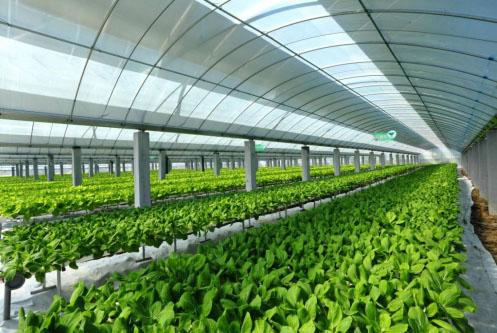The fundamental way out for agriculture lies in modernization and continuous improvement of agricultural comprehensive production capacity. The national conditions of our country determine that the development of modern agriculture must follow the path of modernization of agriculture with Chinese characteristics. This is a fundamental event. Food security is the “greatest of the country”, and ensuring the stable and safe supply of food and important agricultural products has always been a top priority in building an agricultural power.
Today, with the continuous advancement of urbanization, more agricultural workers are turning to urban work, and the reduction of labor force has brought a great impact on agriculture. At the same time, the problem of “aging” of agricultural labor force is becoming increasingly severe. In 2017, the average age of agricultural labor force in China was 53.3 years old; And the rate of aging is very fast, with the proportion of agricultural labor force aged 55 and above rapidly increasing from 12.7% in the first agricultural census in 1996 to 33.6% in the third agricultural census in 2016, almost doubling.
At present, the cultivation of rice, wheat, and other large grain crops has achieved a mechanization rate of over 90% in many regions. Agricultural production is no longer a labor force, and the demand for physical strength is gradually decreasing. The vast majority of production processes are completed through farmers purchasing agricultural machinery and socialized services, therefore, improving the overall operational efficiency of agricultural production is becoming increasingly important.
With the rapid development of technology, smartphones, smart appliances, and digital payments have become the norm in daily life. People have become accustomed to digital life and are proficient in intelligent devices. In the process of agricultural production, intelligent and digital equipment is also gradually changing the mode of agricultural production. Now, tractor drivers can use the navigation system to complete auxiliary driving, greatly improving the work efficiency and farming quality, and the intelligent Rice transplanter no longer needs more people to operate. One person can complete rice planting and driving. With the popularization of agricultural machinery networking, the distribution of Agricultural subsidy also relies on the network platform for statistics and distribution.
Today, intelligent and digital equipment are integrated together through more complete System integration, and new generation information technologies such as the Internet of Things, Big data, artificial intelligence, etc. can achieve accurate control of agricultural production and promote high-quality agricultural development. The United States currently has a large number of advanced technologies that combine the Internet of Things and AI, including intelligent robots, temperature and humidity sensors, aerial photography, and GPS technology, greatly improving the operational efficiency of American farms. 69.6% of farms in the United States use sensors to collect data, and agricultural robots are applied to agricultural production such as sowing, spraying, and harvesting.
In China, a group of agricultural technology companies are rapidly developing and starting from their respective business advantages, gradually starting to create new farm production and operation models. Jingxi Rice Smart Farm, located in Shangzhuang Town, Haidian District, Beijing, will be completed and put into operation in April 2022, with a total area of 405 mu. The farm will build a smart farm with intelligent agricultural machinery as the core and digital intelligent regulation through the integration and application of modern agricultural information technologies such as the new generation Internet of Things, Big data, artificial intelligence, and unmanned driving. It is reported that “Jingxi Rice” has a long history and was once a royal tribute rice planted in the “official fields” personally opened by the emperor. Today, Jingxi rice has been selected as agricultural products of Geography of China’s geographical indications and important agricultural cultural heritage of China. In 2022, the rice field in western Beijing underwent significant changes, with intelligent control centers, intelligent agricultural machinery hangars, and IoT equipment scattered throughout the farmland visible on site. It is reported that the Jingxi Rice Smart Farm has been under construction since April 2022, undertaken by the high-tech enterprise Bochuang Linkage in Haidian District. The project has built an unmanned agricultural machine that covers the entire process of rice cultivation, management, and harvesting. The crop precision planting system based on the Internet of Things includes: a “four emotions” monitoring system for farmland, an intelligent irrigation system for rice fields, and a supporting green and efficient digital model for precision cultivation, achieving precise planting management of rice.


No reply content